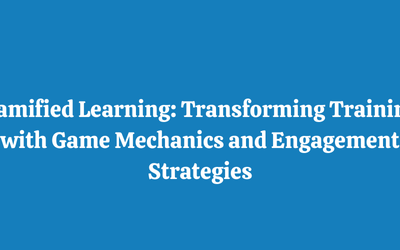SAM vs. ADDIE – Which is better for Learning Design?
Let us compare a commonly accepted; however, less efficient ID model called ADDIE and a more recently developed robust one called SAM. For those of you in the learning and development field, ADDIE must be a familiar model; it’s been used for close to 40 years as one of the main learning industry standards for instructional design.
 So what does the ADDIE model stand for?
So what does the ADDIE model stand for?
| A | Analysis |
| D | Design |
| D | Develop |
| I | Implement |
| E | Evaluation |
The idea behind the ADDIE model has worked for instructional designers over the years. It is a pretty simple model. in ADDIE the stages are sequenced comfortably, firstly the problem is defined before the team moves on to designing or developing, this way the sequences continues till implementation and evaluation .
ADDIE is a 5-stage process for designing and developing the training content.
The principle behind the ADDIE model is that designing/developing/implementing the content of a training cannot begin without prior research. And in the end, evaluation or measurement of success should be done.
So the ADDIE model sounds logical and worth sticking to after all,right? Now Let’s introduce the SAM model; which involves rapid prototyping and it stands for:
| S | Successive |
| A | Approximation |
| M | Model |
The stages involved in the SAM process are the following:
-
- Preparation Stage – An initial meeting is done, with all team members and stakeholders of the project to collect basic information about the learning outcomes.
-
- Iterative Design Stage – Includes designing, prototyping and the evaluating loops.
- Iterative Development Stage – Includes evaluation, development and the implementation loops.
In SAM, also known as the agile model, the concept is to constantly evaluate your training effectiveness throughout your entire learning development process. So unlike the ADDIE model; SAM does not apply a linear approach, but requires the instructor to evaluate the training at each phase. Evaluating continually requires rapid prototyping, there is an involvement of subject matter experts and the stakeholder in every stage of the learning development process. This mimics the business realities seen in most learning organisations , where things move fast and ideas can become outdated more frequently!
With the SAM process, you are constantly receiving feedback from the stakeholders throughout the learning development process.
This methodology is beneficial since you save on time for re-development by finding the problem in the early stages of the development. It is well understood that catching the problems early on can save costs massively also you can ensure a better learning outcome over medium and long term.
So what do we understand between the both?
| SAM vs. ADDIE | |
| SAM | ADDIE |
| Quickly figure out alternative solutions. | Not iterative. |
| Facilitates on time, cost-beneficial and quality project delivery. | A small change in one stage means a change in all other stages and leads to re-work. |
| Constant feedback from stakeholders. | Assumes that the problem statement of the learner is completely understood before development. |
| No requirement of rework. | A time-consuming approach. |
| Defects captured early on | Defects captured in stages |
That ADDIE process is quite basic but comprehensive and thorough. It works for setting up a generic process for the development of instructional products; in a sense it sets a conveyor belt system in motion.
Instructors can create those products with efficiency and quickly; so it ensures that each product output holds equal value and is the same. But, is that what we want? All products holding the same value?
So to overcome the ADDIE process’ drawbacks, the SAM process can be adopted by incorporating its modern features.
Since Rapid prototyping is now possible using Rapid authoring tools such as Articulate storyline, therefore it is easy to adopt and benefit from Successive Approximation Model (SAM).
Contact us at james@stratbeans for a FREE consultation or sign up for a free demo!
Our News
- AI
- Animations
- Articulate
- Articulate 360
- Articulate Engage
- Articulate Live
- Articulate Presenter
- Articulate Quizmaker
- Articulate Replay
- Articulate Review
- Articulate Storyline
- Articulate Storyline 3
- Articulate Studio
- bite sized learning
- Characters
- Content Library
- Corporate Communication
- E-Learning
- e-Learning Authoring Tools
- Employee Engagement
- Game-Based Learning
- Gamification
- Gamiflexer
- Go Sales
- Healthcare
- Instructional Design
- Interactivity
- Knowledge Transfer
- L&D Trends
- Learning
- Learning & Development
- Learning Experience platform
- Learning Management System
- LMS
- LXP
- Microlearning
- mLearning
- Mobile Learning
- Nugget Learning
- Online Training
- Peek
- Performance Support
- Preso
- Quiz and Assessment Platform
- Replay 360
- Rise
- SCORM
- Screen Capture
- Software
- Storyline 360
- Studio 360
- Training Management
- Trainings
- Uncategorized




